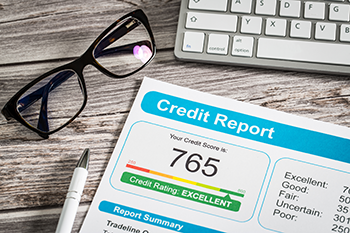 A checking account at one bank is the same as a checking account at another bank, right? Well, maybe not. In fact, according to the J.D. Power 2021 U.S. Retail Banking Satisfaction Study, now 41% of people do all their banking online. This is a pretty big shift from traditional banking.
A checking account at one bank is the same as a checking account at another bank, right? Well, maybe not. In fact, according to the J.D. Power 2021 U.S. Retail Banking Satisfaction Study, now 41% of people do all their banking online. This is a pretty big shift from traditional banking.
After reviewing the financial strength of a bank, here are several other things to consider as you decide what’s really most important to you in selecting a bank.
The online bank versus nearby location
While having a nearby brick and mortar location is important to many banking consumers, you might find better interest rates with an online-only bank because they don’t spend lots of money to maintain physical branches. As people switch to taking care of all their basic banking transactions online, one of the reasons to visit your local bank branch is to talk with a banker. If you believe you’d benefit from such discussion, make sure the online bank you’re considering will facilitate that for you.
Understand key bank fees
In addition to charging loan fees when they lend out money, banks bring in much of their revenue by charging fees on your deposit accounts. You’ll have a much more positive experience by ensuring your bank’s fees don’t outweigh the benefits of the account you’re considering. Here are three key fees to understand:
- Monthly maintenance fees. This is a monthly fee a bank charges on an account. Understand how yours works. Banks will waive these fees if your account is above a certain balance. Others waive the fees if you behave in a way they want you to behave. For instance, if you use a debit card versus writing a paper check. Others want you to make direct deposits. Still others want you to use their bill pay service. Understand this fee class and determine if you can abide by the terms your bank sets for them.
- Overdraft fees. These fees are charged to a checking account if you attempt to buy something but don’t have enough money in your account. There are a variety of ways to avoid overdraft fees, such as signing up for a protection program or linking your savings account to automatically pay the rest of the bill. Take the time to understand your bank’s options to avoid overdrafts and the cost associated with them.
- ATM fees. Some ATMs require you to pay money to use their machines, especially if the ATM you’re using isn’t in your bank’s network. Don’t overlook the opportunity to save money by ensuring that the bank you’re considering supplies ATMs in your area so you won’t have to pay a fee every time you need to use an ATM.
Other banking tools
Banks often provide tools to help you budget your daily and monthly expenses. Many offer free credit scores and credit monitoring. Others offer automatic transfers into a savings account. Still others offer the ability to open multiple savings accounts and label each account for different purposes.
Keep these tips in mind the next time you need to choose a new bank. With many different banks to choose from, a little research can ensure the bank you choose fits your financial needs and priorities.


 And then you get the dreaded phone call. Your credit score wasn’t high enough to approve the loan! Was there anything you could have done to get a higher credit score?
And then you get the dreaded phone call. Your credit score wasn’t high enough to approve the loan! Was there anything you could have done to get a higher credit score? With 30-year fixed rate mortgages approaching historical lows of 3%, you may be thinking about refinancing an existing mortgage. But you better read the fine print before signing on the dotted line to avoid paying too much money. Here are some common mistakes homeowners make when refinancing their mortgage.
With 30-year fixed rate mortgages approaching historical lows of 3%, you may be thinking about refinancing an existing mortgage. But you better read the fine print before signing on the dotted line to avoid paying too much money. Here are some common mistakes homeowners make when refinancing their mortgage. It suddenly just got a whole lot more difficult to buy a home
It suddenly just got a whole lot more difficult to buy a home